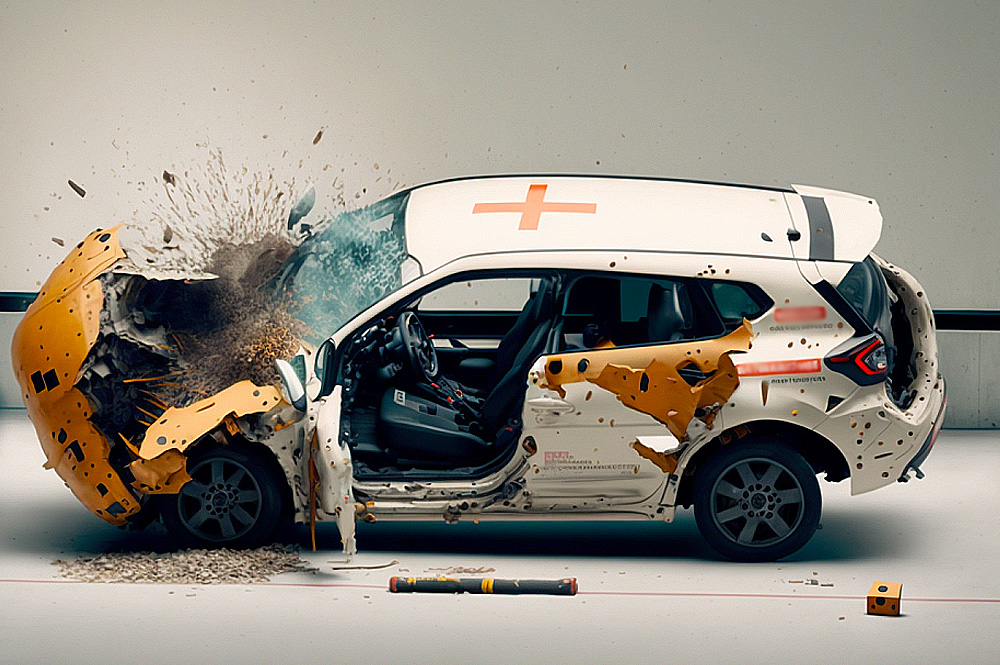
The science of motor vehicle crashes is a complex area of study that involves understanding the laws of physics and how they apply to a crash. If you are an accident reconstruction expert, this is part of your job and you understand these things. But for regular everyday people like you and me, most of us don’t understand or even think about this. Taking Newton’s laws of motion into account, there is a great deal of science involved in understanding the physics of a car crash. But may we should try and at least have a basic understanding of these things. Understanding the physics behind these accidents is crucial in order to improve safety and reduce the number of crashes that take place. As they say, knowledge is power, so maybe by understanding things like how much force can be generated by a speeding metal object weighing thousands of pounds, maybe we’ll be more careful when driving on the streets and freeways. It just may save your own life one day.
According to the CDC, millions of people are injured every year in the U.S. as the result of vehicle crashes. In fact, there were over 2.1 million emergency department visits for injuries from motor vehicle crashes in 2020 alone! Many of course are a direct result of drunk driving, distracted driving or drowsy driving. If you had to guess, what would be the most common element in injury crashes? Yep, speed. The relationship of fatal accidents and speeding is of course a theme in these injury crashes and it’s the one everyone knows about.
Newton’s Laws of Motion (easily explained) and Car Accidents

Sir Isaac Newton came up with three laws that explain how objects move.
- The law of inertia
- The law of force and acceleration
- The law of action and reaction
The first law, the law of inertia, applies to the motion of the cars involved in the crash. If a car is at rest and another car crashes into it, the car that was at rest will stay at rest, while the car that was in motion will come to a stop. The same applies if both cars were in motion, the cars will continue to move until an unbalanced force, like the impact of the collision, stops them. This is why the speed and direction of the cars involved in the crash are important factors in determining the severity of the accident.
The second law, the law of force and acceleration, applies to the forces involved in the crash. The force of the impact is equal to the mass of the cars involved multiplied by their acceleration. This means that the more massive the cars are, and the faster they are going, the greater the force of the impact will be. This is why a crash between two cars traveling at high speeds is more severe than a crash between two cars traveling at low speeds. A semi-truck traveling at 80mph crashing head on into a Dodge caravan going in the opposite direction at the same rate of speed will turn destroy that van into thousands of pieces, compared to just minor damage if they were both traveling 15mph.
The third law, the law of action and reaction, applies to the safety features of the car, like airbags and seat belts. When the car comes to a sudden stop in a crash, the passengers inside will continue to move forward at the same speed until an unbalanced force, like an airbag or a seat belt, stops them. This is why airbags and seat belts are designed to deploy with a certain amount of force to counteract the forward motion of the passengers during a crash. Each year, vehicles add more and more safety features and this absolutely saves lives.
The Physics of Impact: Force and Momentum
Force is a push or pull on an object that can change its motion. Forces can be caused by contact, such as friction or a collision, or they can be non-contact forces, such as gravity or magnetism. Momentum, on the other hand, is the quantity of motion an object has. It is the product of an object’s mass and velocity. The formula for momentum is:
In a collision, the forces acting on the objects are equal and opposite, and this results in a change in the momentum of the objects. According to the law of conservation of momentum, the total momentum of a closed system (meaning no external force acting on the system) is conserved before and after the collision.
For example, in a head-on collision between two cars, the force of the impact will cause the cars to change their motion, but the total momentum of the cars before and after the collision will be the same. The momentum of the cars before the collision is equal to the sum of the individual momenta of the cars and after the collision the total momentum is equal to the sum of the individual momenta of the cars after the collision.
Here’s a crash test performed by the IIHS (Insurance Institute for Highway Safety).
And one more:
I don’t think anyone wants to play a crash test dummy in real life, right?
By understanding key concepts such as force, energy, motion, and speed, as well as the factors that affect the severity of a crash, hopefully take all these things into consideration the next time you are driving on the roads. Stay safe out there…and don’t be a dummy!
